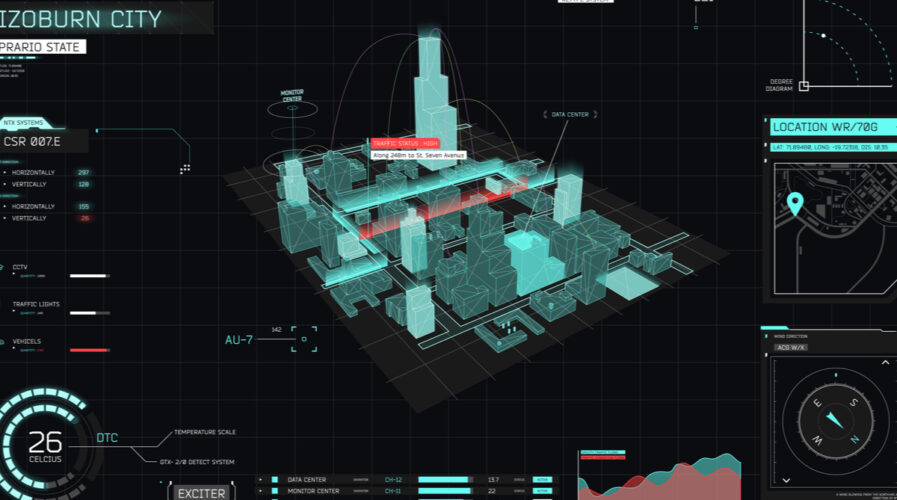
Can smart enterprise IoT tools speed up a return-to-office timeline? Source: Shutterstock
Will IoT smart devices power a speedy return to the workplace?
- Can smart enterprise IoT tools speed up a return-to-office timeline, or will remote working become the accepted alternative?
There is little doubt that since the events of 2020, remote working and all its benefits and disadvantages therein have taken center stage for a lot of workers – creating the idea of the ‘virtualized office’. Solutions providers have also pivoted to this inward way of working, developing more smart solutions for the home and the home office – but also for the smart enterprise, as organizations begin to consider a back-to-office strategy.
Thanks to recent developments, both the Internet of Things (IoT) and the Industrial Internet of Things (IIoT) are making Internet-enabled devices an increasingly common feature in business. This trend was already on the upswing prior to the global lockdown, with 46% of IT, telecommunications, and business managers saying their organizations had already invested in IoT applications and/or services, while another 30% were readying to invest in the next 12-24 months.
But with millions of workers now working and communicating virtually from remote locations, the role of IoT in helping to realize the vision of the smart enterprise has drawn even greater interest. For one thing, IoT has gained traction as an enabler of productive remote work and unhindered team collaboration across industries, said Igor Efremov the head of HR at Itransition, a Denver, US-based software development company.
Sectors that formerly could not continuously function without human labor such as manufacturing, can now rely on IIoT infrastructure including sensors, cameras, and endpoints to allow technicians to monitor and maintain asset performance in real-time, without actually being physically present.
“IoT will continue being valuable for the retail and supply chain industries, enabling their workers to remotely keep tabs on inventory levels, warehouse space utilization and storage conditions,” Efremov said. “This year, due to 5G-induced advancements in self-driving technology, more and more companies are likely to shift to unmanned shipments.”
Reconnecting the smart enterprise
IoT has been one of those instrumental technologies to keep the remote, virtualized workplace ticking. But many industries do not foresee running a remote workforce forever, and for many it just might not be feasible to operate remotely for such a prolonged period. These businesses will be preparing to reopen offices, but these physical environments might look drastically different than before the pandemic.
Contactless smart devices such as wearables and sensors will be critical for reducing surface touching, helping keep workspaces safe and sanitized – which can lead to a potential need for larger budgets to equip the space. Key to making this work will be application programming interfaces or APIs, which can function as a bridge to connect businesses’ technology with other applications like wearable devices.
APIs also empower employee management systems to control the amount of people in a building at a time, as well as help with automating new digital check-in procedures. API technology will also be crucial to enhancing hands-free functionality, according to Asanka Abeysinghe the chief technology evangelist at WSO2, aiding to rapidly improve reliability and remote access, as well as eliminating the demand for IT teams to constantly be on-site.
The growth of smart enterprise IoT platforms has kept pace with the quickly-turning workplace dynamics, with industry experts estimating that smart equipment will play additional or changing roles in the coming years.
Advancements such as indoor location services and indoor geolocation will increasingly allow employees to book time slots and meeting rooms, help those in the office comprehend where people are, and find desks and meeting spots on the fly when they elect to go into an occupied office.
Meanwhile, closely-integrated IoT platforms will allow the staff themselves to have environmental control over their workplace via their phone or other devices, free of the complexity of centrally-controlled systems.
And it is not just employees that gain from IoT in the workplace. Employers and building managers are gaining too. Smart enterprise IoT helps them understand the use of their space more accurately and how it is functioning from an employee perspective. Smartphone apps using IoT allow employees to report building problems and address maintenance issues without tracking down service workers.
Building owners can understand and respond to tenant issues and control energy costs, while also having insight into operations to plan for capital improvement projects. And in a post-COVID era, smart sensors and other devices can aid in checking temperatures, scanning features for ID purposes, and helping reduce contact on shared surfaces installed sensor tech.
READ MORE
- Ethical AI: The renewed importance of safeguarding data and customer privacy in Generative AI applications
- How Japan balances AI-driven opportunities with cybersecurity needs
- Deploying SASE: Benchmarking your approach
- Insurance everywhere all at once: the digital transformation of the APAC insurance industry
- Google parent Alphabet eyes HubSpot: A potential acquisition shaping the future of CRM
